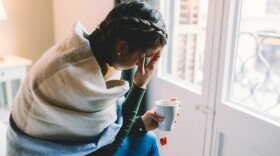-
This year, face masks are on most parents' list of back-to-school supplies. But which ones are most effective? Here's how to choose the right one for your child.
-
After vaccination, antibody levels can help predict how much protection a COVID-19 shot offers, scientists are learning. The finding could speed up the development of future vaccines.
-
For most people, COVID-19 vaccines promise a return to something akin to normal life. But for the hundreds of thousands of Americans who have a transplanted organ, it's a different story.
-
The pandemic has done a number on us, in too many ways to count. Our bodies are responding with feelings of fatigue and lack of focus, experts say. Here are some tips to help you feel better.
-
Using two different COVID-19 vaccines is a bit like giving the immune system two pictures of the virus, maybe one face-on and one in profile.
-
The vast majority of headaches are innocuous despite the misery they cause. But here are the red flag signs to watch out for in the rare case a headache points to a bigger issue.
-
Ecologist Suzanne Simard says trees are "social creatures" that communicate with each other in remarkable ways — including warning each other of danger and sharing nutrients at critical times.
-
Nicole Lynn Lewis felt overwhelmed and isolated as a young single mom in college. Now she runs a nonprofit designed to help teen parents get the financial and emotional support they need to thrive.
-
This isn't the first big vaccine rollout, and the past holds lessons for the pandemic present. Here's a look at how the polio vaccine overcame U.S. hesitancy.
-
All the singers in this U.K. choir have undergone laryngectomies — voice box removal — to treat cancer. Singing builds lung strength, and performing together builds confidence, choir members say.
-
The nation's top addiction scientist has teamed up with a prominent artist to let people know that substance use disorder is a disease, not a moral failure.
-
With older adults vaccinated, doctors say a growing share of their COVID-19 patients are in their 20s, 30s, 40s and 50s, as more contagious variants circulate among people who are still unvaccinated.














